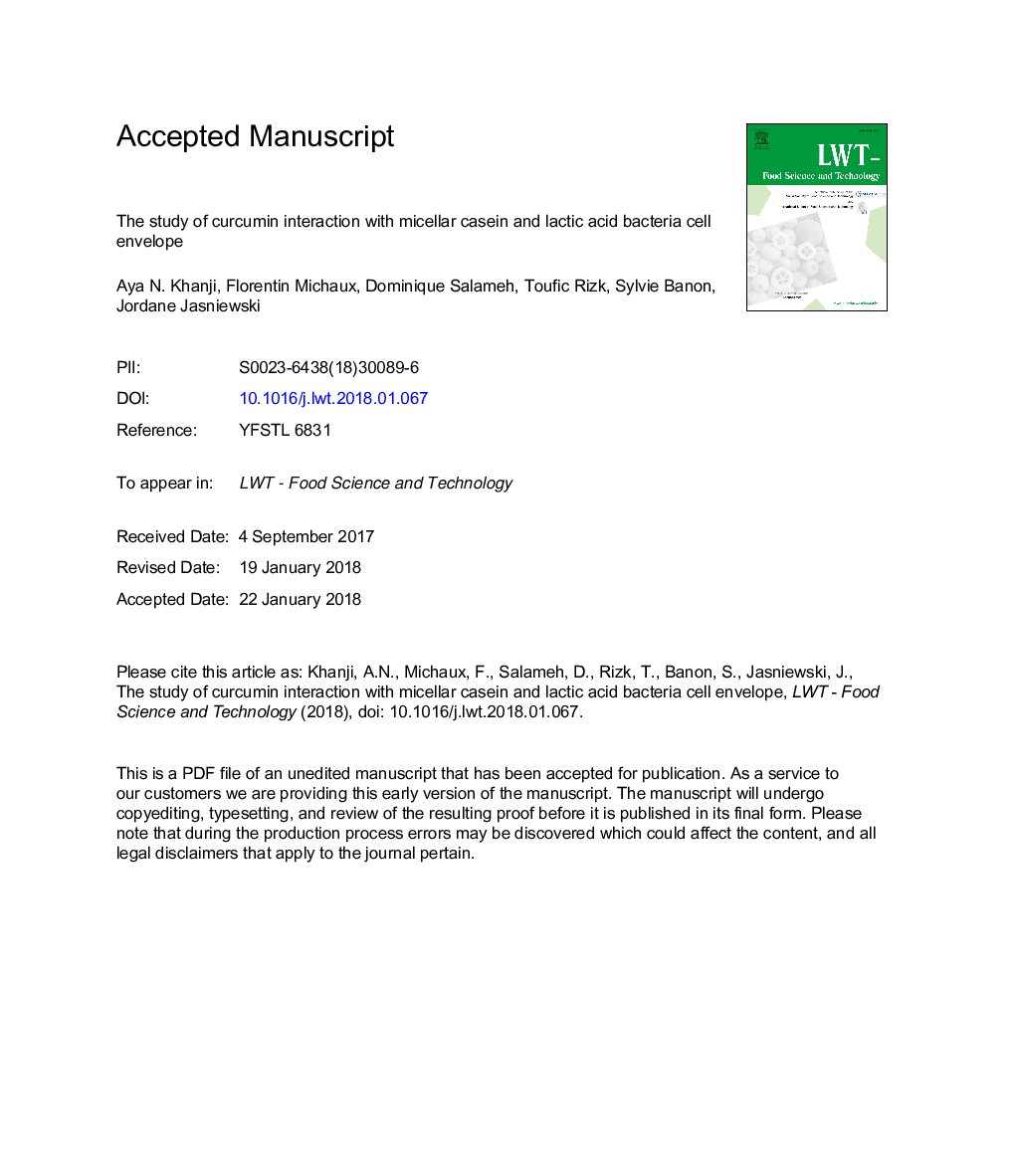| Article ID | Journal | Published Year | Pages | File Type |
|---|---|---|---|---|
| 8891731 | LWT - Food Science and Technology | 2018 | 35 Pages |
Abstract
Curcumin interaction with micellar caseins (MC), Lactobacillus delbrueckii bulgaricus (Lb) and Streptococcus thermophilus (St) and its influence on the acid gelation were investigated. Epifluorescence microscopy evidenced the adsorption of curcumin on bacteria surfaces and its transfer from MC to bacteria. Fluorescence spectroscopy of curcumin and fluorescence quenching of caseins variations in presence of bacteria and MC were evaluated. The interaction between curcumin and St and Lb was confirmed due to the decrease of curcumin fluorescence intensity from 1.7 A.U to 1.20 A.U and to 1.40 A.U, respectively. The transfer of curcumin between MC and bacteria was confirmed. The curcumin interacted more with St than with Lb envelope with a fluorescence intensity decrease from 6.20â¯Â±â¯0.02 A.U to 5.20â¯Â±â¯0.08 A.U and to 4.60â¯Â±â¯0.08 A.U, respectively. It also showed that St was more hydrophobic than Lb bacterial envelope leading curcumin to interact more with Streptococcus surface. Curcumin adsorption did not affect Lb and St growth nor its acidification rate of milk. The acid gelation study led to a typical gel yoghurt-like formation. For the first time, it was demonstrated that curcumin interacted with lactic bacteria without modifying its growth and milk acidic gelation property.
Related Topics
Life Sciences
Agricultural and Biological Sciences
Food Science
Authors
Aya N. Khanji, Florentin Michaux, Dominique Salameh, Toufic Rizk, Sylvie Banon, Jordane Jasniewski,
